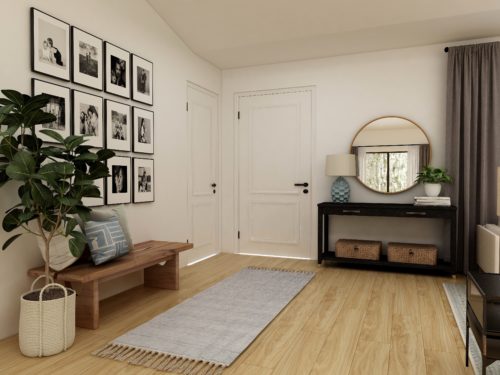
How to transition between two different wood floors
When you are installing two different types of wood flooring in your home, it is important to know how to transition between them properly. This will ensure a seamless look and protect your floors from damage. Here are some tips to help you make the switch.
How to transition between two different wood floors
If you’re lucky enough to have hardwood floors in your home, you know how beautiful and warm they can make a space feel. However, if you have more than one type of wood flooring, you may be wondering how to transition between the two.
One way to do this is to use a threshold strip. Threshold strips are narrow pieces of wood that are placed along the edge of the flooring. They can be stained or painted to match the surrounding floors, and they provide a clean, finished look.
Another option is to use a transition strip that is slightly wider and has a lip that fits over the edge of the flooring. This type of strip is ideal for areas where there is a slight difference in height between the two types of floors.
As an alternative option, you can play with different materials, colors, patterns, and shapes to create a more artistic transition between two different wood floors. This look even more modern if you can fade materials in and out of each wood floor.
Whichever method you choose, transitioning between different types of wood flooring doesn’t have to be difficult. With a little planning and attention to detail, you can create a smooth and seamless transition that will add beauty and value to your home.
How to create a seamless transition between two floors
One of the most important aspects of interior design is creating a smooth transition between two different floors. This can be especially challenging if the floors are made of different materials or have different finishes. However, there are a few tips that can help to create a seamless transition.
First, it’s important to consider the overall color palette of the space. Using similar colors for each floor will help to create a sense of cohesion.
Another tip is to choose flooring materials that have similar textures (unless you’re purposely going for a more artistic feel). For example, if one floor is made of polished stone and the other is made of hardwood, choosing a rug with a nubby texture can help to create visual interest and tie the two floors together.
With a little planning, it’s easy to create a beautiful and cohesive space.
Tips for choosing floor patterns for your home
When it comes to choosing floor patterns for your home, there are a few things to keep in mind. Let’s break those considerations down.
- Consider the overall style of your home. If you have a more traditional décor, then you might want to choose a classic floor pattern, such as a checkerboard or herringbone. However, if your home has a more contemporary feel, then you can afford to be more creative with your choice of flooring. Geometric patterns are always popular, or you could opt for something more daring, such as an abstract design.
- Think about the function of the room. A busy pattern might not be ideal for a relaxing space like a bedroom, but it could work well in a high-traffic area like a kitchen or entryway.
- Don’t forget about durability. If you have pets or young children, then you’ll need to choose a floor covering that can stand up to heavy use.
LOOKING FOR MORE WOOD FLOORING RESOURCES AND TIPS?
Then we’ve got you covered. At Walk The Plank, we provide wood flooring and installation services for companies and residents throughout Kern County, and we love helping our clients find their dream wood flooring.
Check out these resources for more tips and inspiration:


